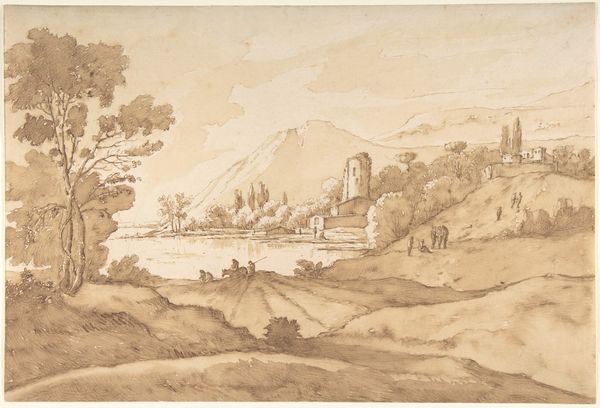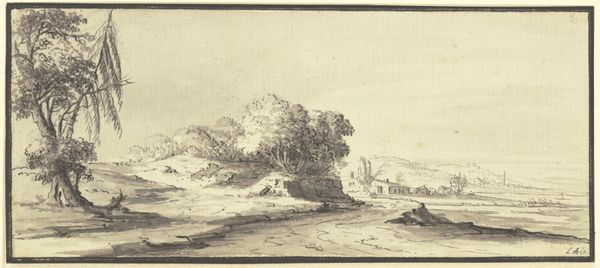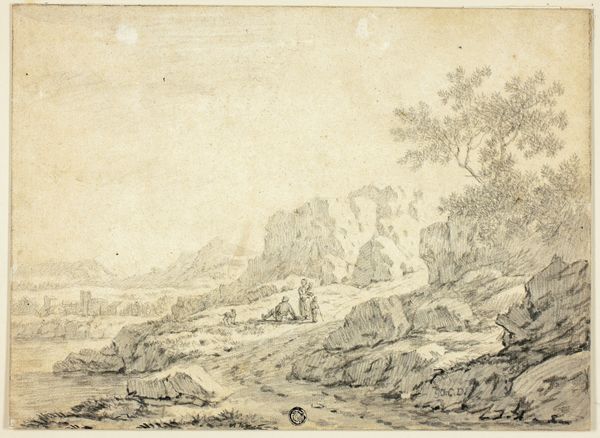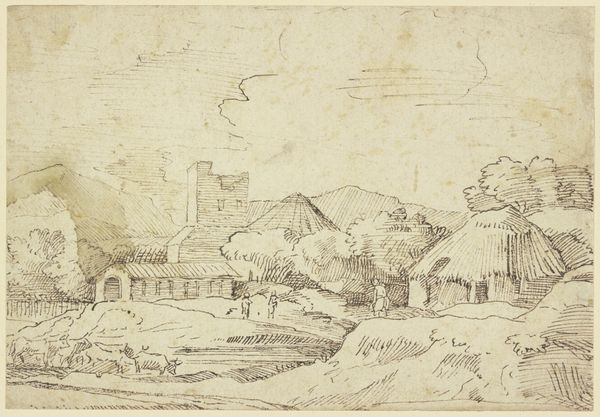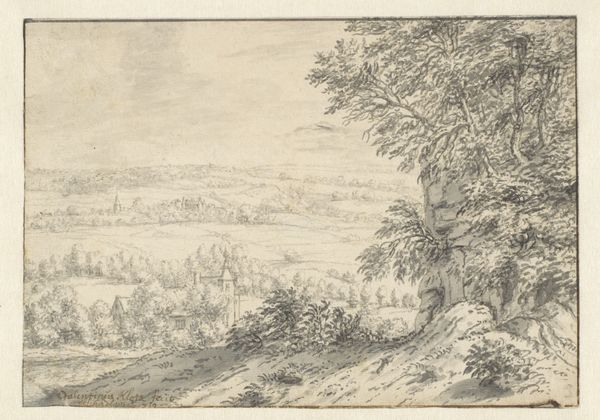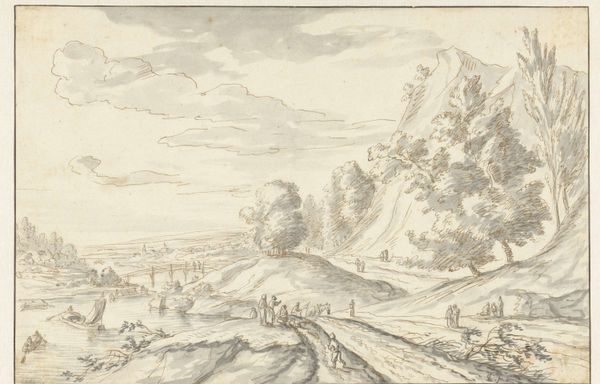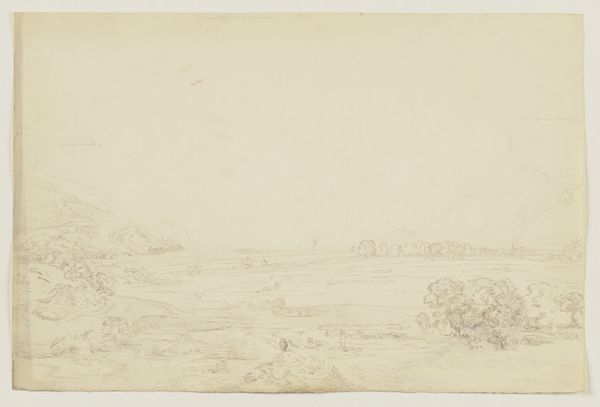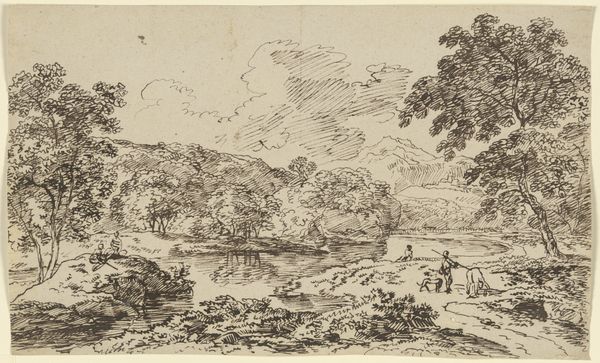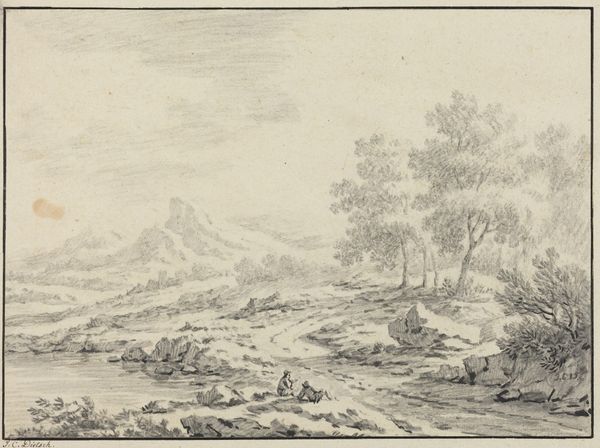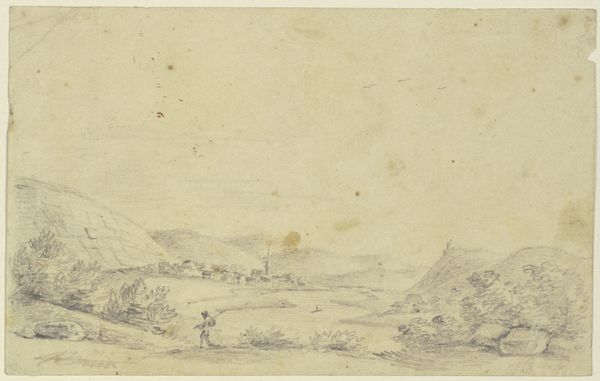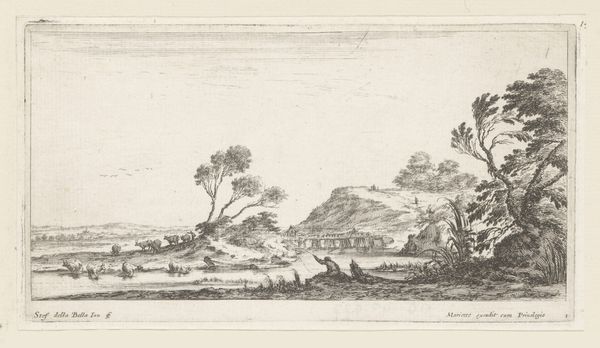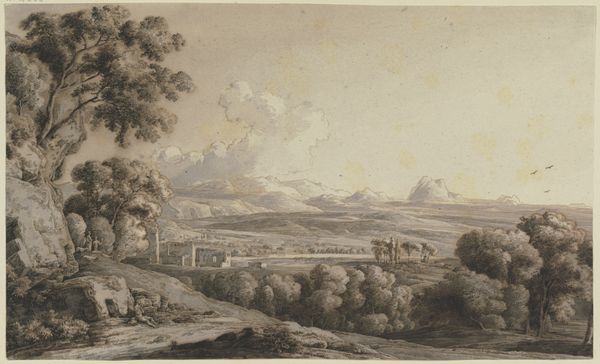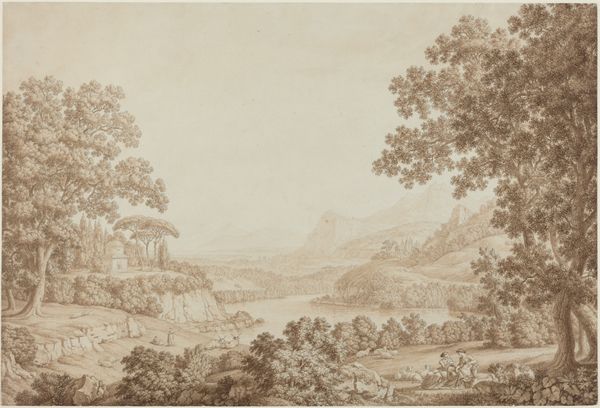
drawing, pencil
#
drawing
#
baroque
#
landscape
#
pencil
#
14_17th-century
Copyright: Public Domain
Rembrandt van Rijn made this landscape drawing with pen and brown ink in the Netherlands. He was interested in the natural world but even more so in the drama of human activity. This landscape looks like a real place but it is a construction. The monumental rock face, for example, is not typically Dutch. Instead, it is an imaginary amalgamation of observed and remembered details. The image also contains social realities. The bridge signifies trade and travel, while figures dotted throughout the scene represent everyday life. Dutch art of this time was closely tied to the Protestant faith and the rise of a wealthy merchant class. Artists catered to the tastes of this new audience, creating accessible images of everyday life. We can look to period maps and travelogues, merchant records, and religious tracts to understand the social conditions that shaped Rembrandt’s artistic production. By doing this we can better appreciate the public role of his art.
Comments
stadelmuseum about 2 years ago
⋮
Rembrandt’s landscape drawings are basically always sketches drawn before the motif. The kind of finished composition we find here, with tiny people in a majestic “world landscape” of mountains, a river, city and countryside is found in only a few of his paintings. This and the signature, unusual in his drawings, led to the suspicion as far back as the 19th century that this print was a “forgery”. More recent examinations however have produced arguments favouring the notion that it could in fact be an original. A close look at the range of details, simply drawn but vibrant, such as the travellers in the left foreground, reveals a level of drawing expertise not anticipated in a first glance at this surprising drawing.
Join the conversation
Join millions of artists and users on Artera today and experience the ultimate creative platform.
